Supermicro X12SCA-F Test Configuration
For our test configuration we used:
- Motherboard: Supermicro X12SCA-F
- CPU: Intel Xeon W-1290P and W-1270
- Memory: 4x Micron 16GB ECC DIMMs, 2x Crucial 8GB non-ECC DDR4 DIMMs
- SATA SSD: Intel DC S3700 400GB (SATA)
- M.2 SSD: SK.Hynix M.2 22110 960GB
Something we did not test, but we want to note here, is that the solution can support other consumer CPUs, not just the Xeon W series. We were able to use standard DDR4 DIMMs, but we did not have a Core i3, for example, to test in the system. Instead, we focused on higher-end CPUs.
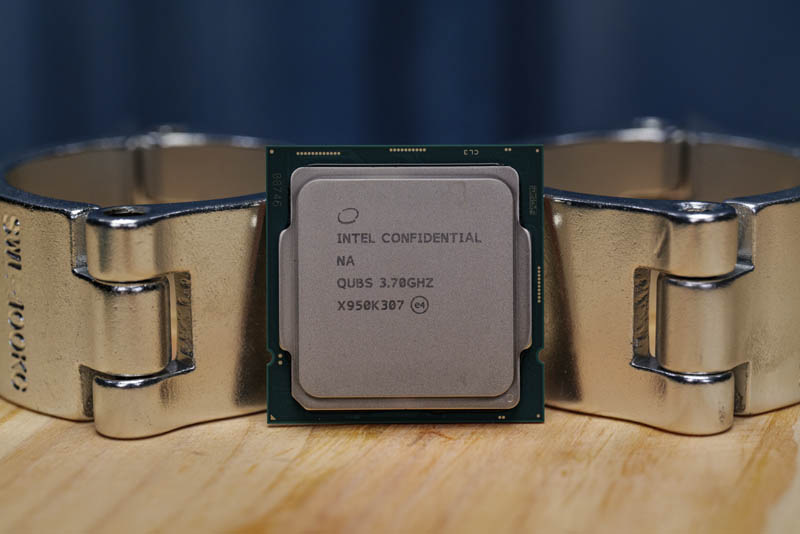
Also, Intel’s CPUs are creeping up in TDP for this socket. For the Socket H5 layout, we have a long history of CPU coolers. It may seem like one can use the old Intel boxed coolers that came with legacy CPUs in this socket with the new chips. While they will fit, even the Xeon W-1270 would overheat with these lower-end solutions. Since there is a wide variety of ATX cases and coolers available for these systems, we suggest, especially at the higher-end, to invest in a solid cooling solution especially with the 8 and 10 core parts.
The Intel Xeon W-1290P shown above is a 10 core part. Until two years ago we were still only at 4 cores in the Xeon E3 series for workstations. We discussed this in the Looking back at Intel Xeon E3-1200 V1-V6 to the New Xeon E-2100 piece. These smaller systems can now offer a lot of performance but are still limited in terms of using unbuffered memory.
Supermicro X12SCA-F Performance
Instead of going through the entire Linux-Bench test suite, we are going to show a few performance and power numbers here to give a general sense of performance. We are going to have our full Xeon W processor review series, so this is just some sense of where the performance is at for these machines.
Python Linux 4.4.2 Kernel Compile Benchmark
This is one of the most requested benchmarks for STH over the past few years. The task was simple, we have a standard configuration file, the Linux 4.4.2 kernel from kernel.org, and make the standard auto-generated configuration utilizing every thread in the system. We are expressing results in terms of compiles per hour to make the results easier to read:
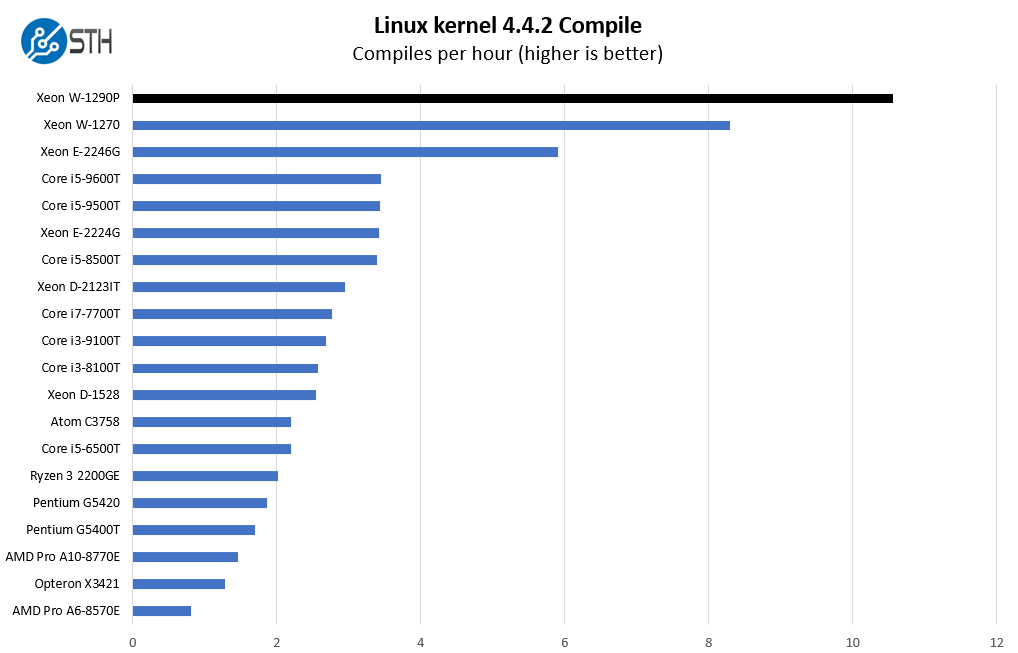
Here we can see a fairly massive level of performance over some of the lower-speed segments. The “T” series processor segment is popular in the ~1L desktop PC workstation space. For many corporate buyers in this class, the ~1L desktop PC may be the standard issue for employees while the X12SCA-F and Xeon W system is an upgrade for select sets of employees. We wanted to show that there is a massive performance gain that can be achieved in this platform.
7-zip Compression Performance
7-zip is a widely used compression/ decompression program that works cross-platform. We started using the program during our early days with Windows testing. It is now part of Linux-Bench.
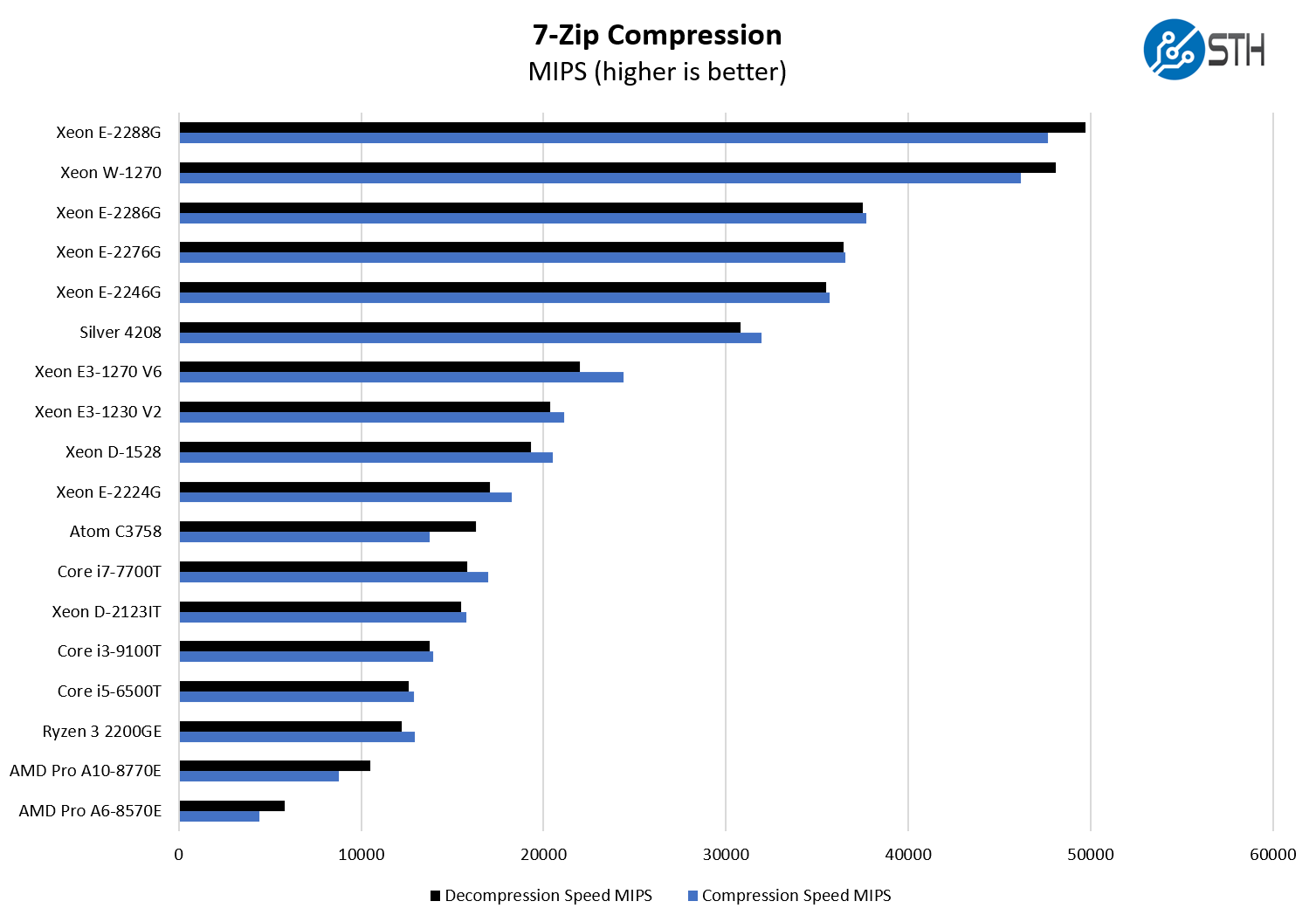
While the Xeon W-1290P is fast, as one can see in the Linux Kernel Compile benchmark, it is also a high TDP “P” part. We wanted to show a comparison to the more mainstream power profile parts including the previous generation Xeon E-2200 series and some of the Xeon E3 series parts. As one can see, we are moving up the stack as the mid-range Xeon W-1270 nearly matches the previous top-end Xeon E-2288G part’s performance.
OpenSSL Performance
OpenSSL is widely used to secure communications between servers. This is an important protocol in many server stacks. We first look at our sign tests:
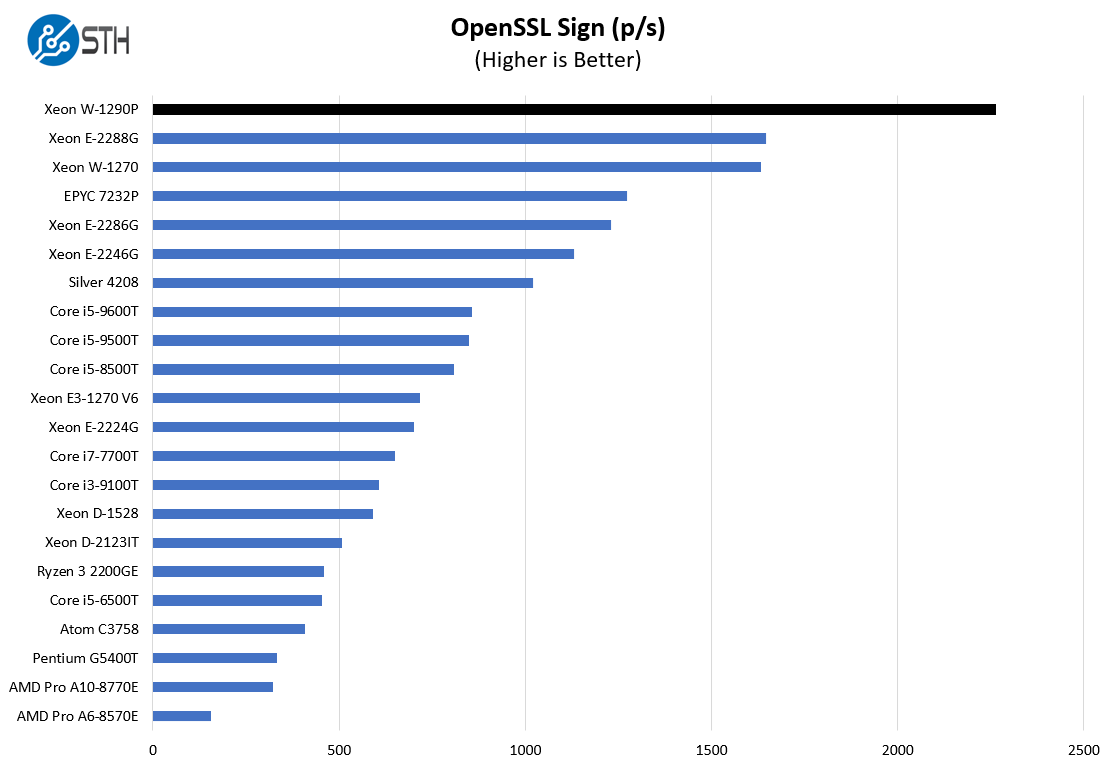
Here are the verify results:
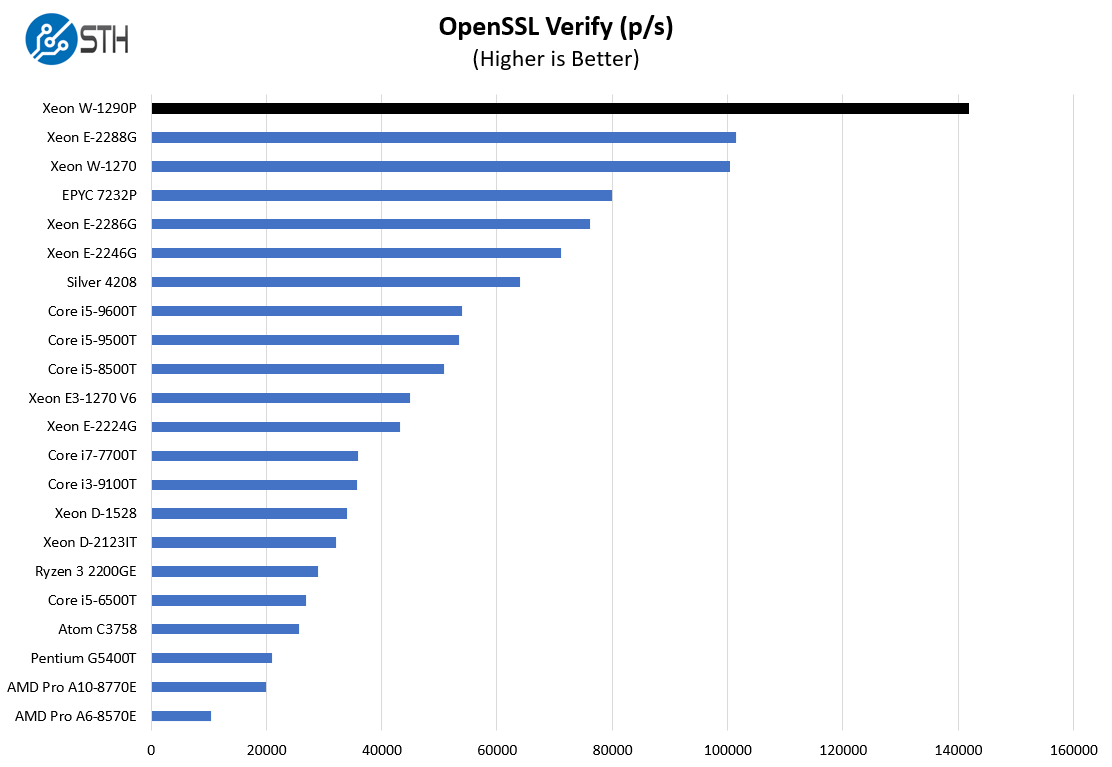
Adding the Xeon W-1290P back in as a higher-TDP part, we can see just how much faster having 10 higher speed and power cores add. This was a major jump in this generation versus previous generations of parts.
For those wondering, performance-wise the Supermicro X12SAE and X12SCA-F were very close to the point that we would call it a margin of error difference <1%. That makes sense since they are nearly identical platforms but we did confirm this hypothesis.
Next, we are going to look at the market perspective before getting to our final words.




It’s a home PC board tarted up with a management solution. It does not even give a nod to front to back airflow. IDK why Intel keeps up the S1151/S1200 Xeon fiction. I guess there are ppl who will pay a bit extra for those four letters.
They aren’t paying extra for the word ‘Xeon’, they are paying extra for the ECC support, which if you are a pro using a workstation that peace of mind can be worthwhile.
Board looks good but the IPMI feels a little redundant on a platform that can support AMT – would be nice if this had been tested on this and the equivalent board without IPMI – as I understand it you should be able to install meshcommander directly into the firmware to put a web interface on it:
https://www.meshcommander.com/meshcommander/firmware
Getting the HIGH END server gear to review –
Between You, Toms’s and The Corpse of Anandtech – you guys can’t get 1 high end product between you all.
Tim Walker
a Pro using a workstation does not have a use for 8C and 2 memory channels
I read somewhere that Intel is planning to expand the DMI link to x8 lanes.
Can anyone else shed some light on that rumor?
See Page 2 in this review, where DMI is still x4.
@Bob, I partially agree on the memory channels but I think 8C systems are still very important for many “Pros”. With software companies aggressively using per core licensing (i.e. Ansys) they are still relevant. This subject has been discussed on this website. This is especially true in a year where budgets may be tight and you may not be able to get those extra core license packs approved. You might be down to only 4 cores for simulation work. With the SKU’s being released by AMD and Intel I think they recognize this issue as well. Once W-1300 and Ice Lake release I’d love to see a round up of 8C system solutions.
@Bob they literally did these in a row like 2 weeks ago
https://www.servethehome.com/dell-emc-poweredge-xe7100-review/
https://www.servethehome.com/gigabyte-r292-4s1-server-review-2u-4-socket-cooper-lake/
https://www.servethehome.com/inside-an-innovium-teralynx-7-based-32x-400gbe-switch/
https://www.servethehome.com/amd-epyc-7003-milan-the-fast-gets-faster/
Maybe find somewhere else to troll? You have no credibility.
@Tim W, speaking as a guy who has been working in the computer racket as both a sysadmin and a dev for 25 years, the ECC claims qua workstations are overrated and almost entirely related to making customers feel good.
Anyone know if this board/BIOS will take an 11th Gen since they both are LGA 1200??